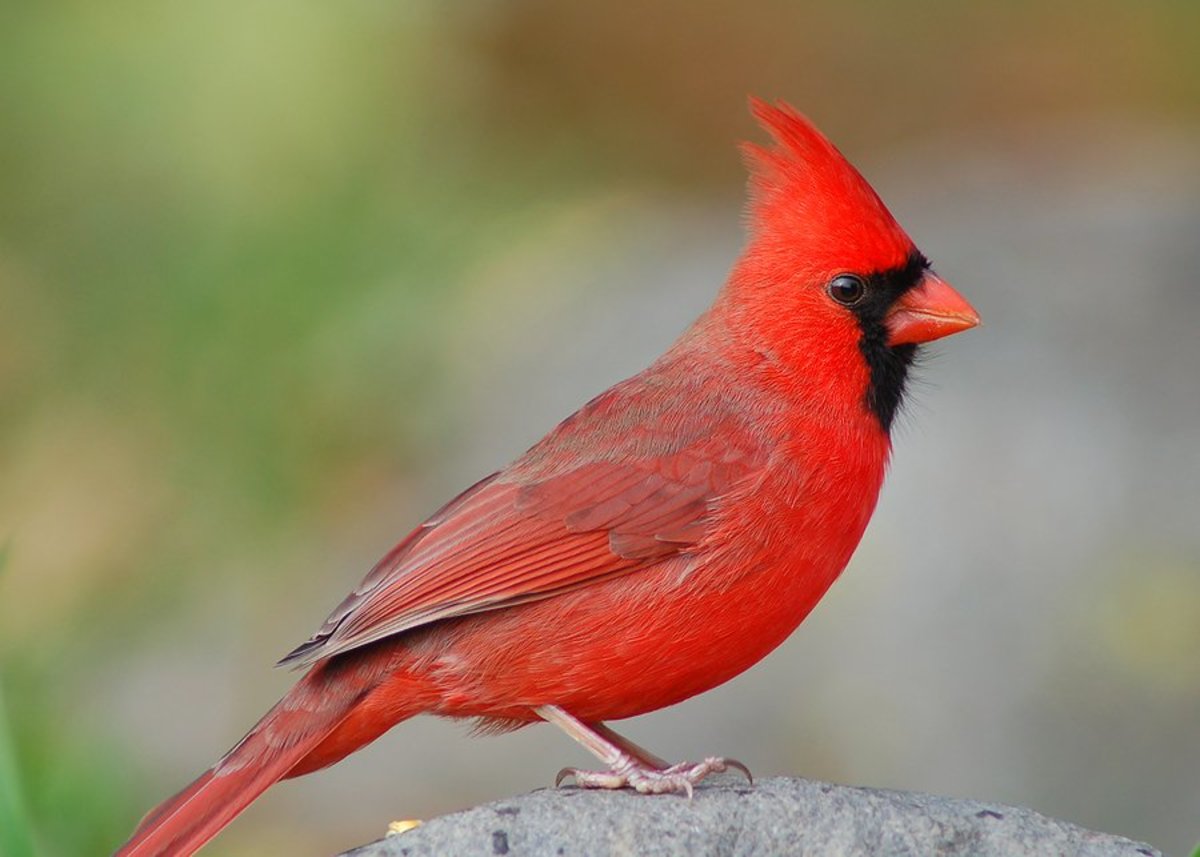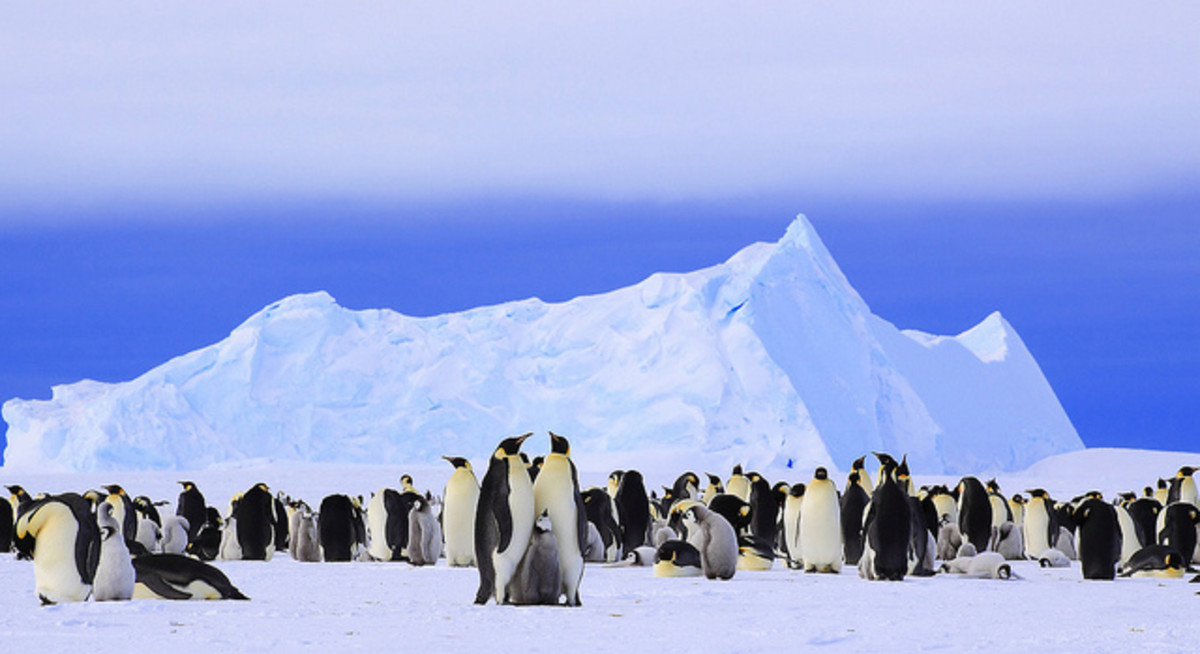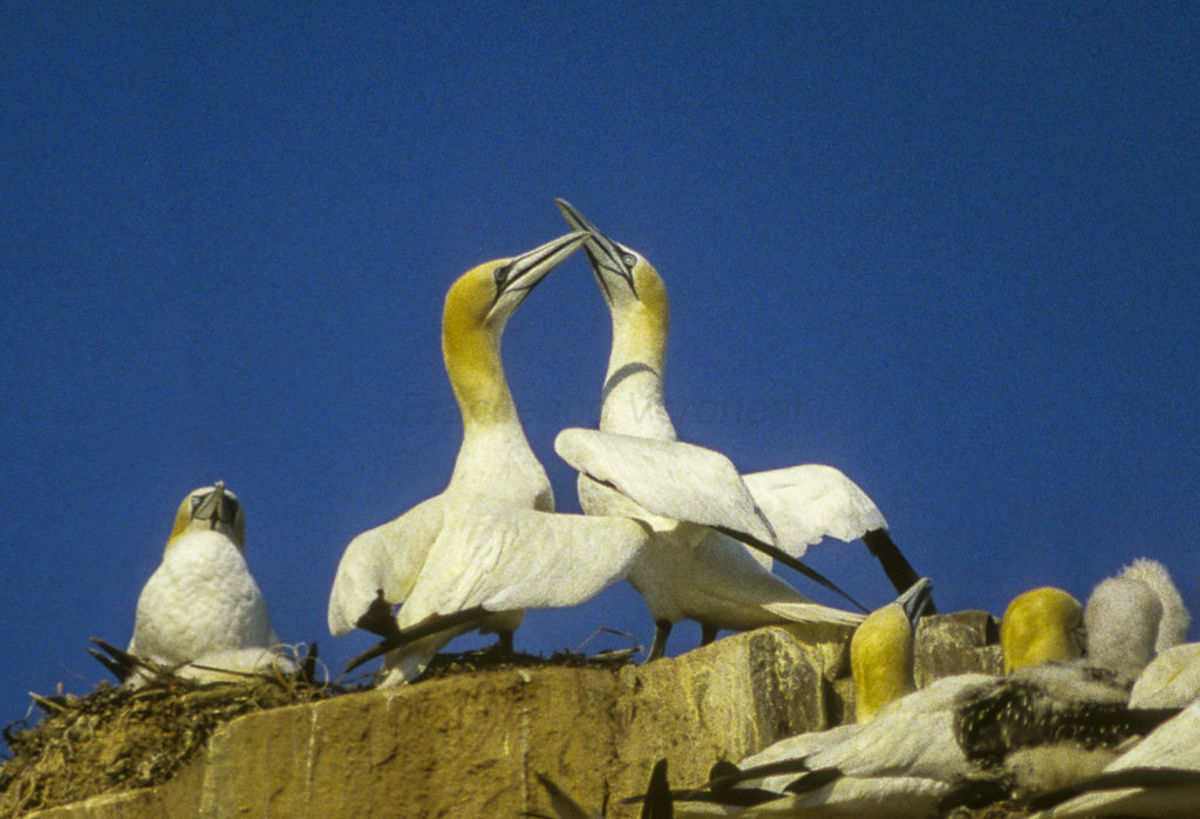On A Lark And Its Song
Voices We Will Never Hear In America
Without most of us knowing it, here in the United States (and in other countries) when we read Shakespeare or Shelly writing in ecstasy of the sweet-throated vocalists of the United Kingdom -- we experience the same sort of wonder people there feel, when they read of our common American humming-birds. We often just don't know in a first-hand way, the thrill of being in more intimate contact with those bird species, as they are not native to this country.
As we all know, there are things that can't be bought. There are experiences that can't be bought either, and the true essence of such delights, can only be imagined. I'm fairly certain that most Americans have heard of the "lark" and the "nightingale." References to them in poetry and literature has gone on for centuries. Yet, since we have neither skylarks nor nightingales in this country, it's their voices we will not recall. However, it wasn't because early settlers didn't try to introduce them.
Our lack, goes back to something we often take for granted. We're not so grateful in this country as we should be -- that the Old World gave the New World many common place American icons. To take that thought further -- horses, cows, sheep, pigs, goats, poultry, pigeons, many varieties of bees, and many fruits, trees, and vegetables -- all were not native to the United States. They all arrived with those who came to explore and settle this country.
In a way, it's sort of miraculous that they all thrived here past belief and against the odds. Those survivors returned the favor of life, to feed and sustain and clothe, the original introducers to the New World. In another way, it's sort of sad to know that certain gifts were not America's to keep, though I'd like to think she would gladly do so. The gift of the lark and nightingale's voices was not meant to be on this continent.
In the early days, large numbers of skylarks, nightingales, and English robins were brought to North America. However, these natural jewels of nature did not fit into that rich setting. The little songsters vanished here, perishing in the fierce competition they had to face from native birds. The fact that upon being released from captivity, that they perhaps never met others of their own kind at mating time -- also contributed to their failure to re-populate here.
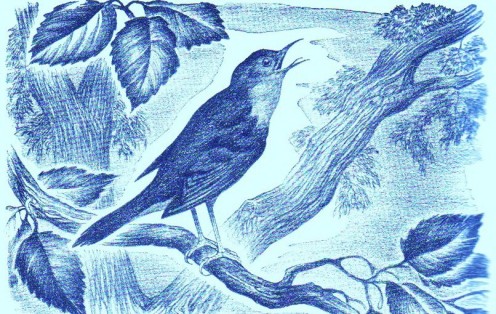
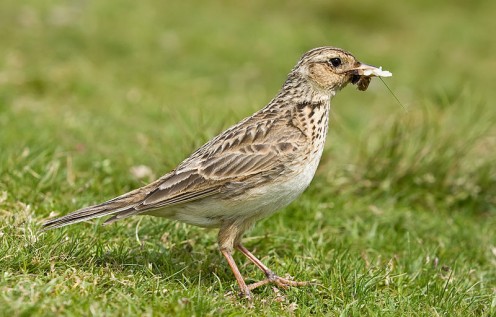
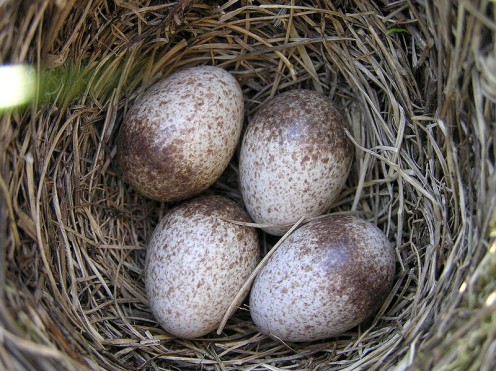
A Musical Life
Find larks where we may, the larks all sing, and are the heralds of happiness. The world may be sad and worn and depressed, but not wherever a lark is singing -- as it is to tell us that woes are not eternal, that felicity is about us for the seeking. The larks are the optimists of the bird world, and we have need of them. It was Goethe who wrote:
"Let your trouble be, Light will follow dark: though the heaven falls, You may hear a lark."
The larks make life musical. They have a number of close bird relatives, some of which are found on the North American continent:
- Skylark
- White Wagtail
- Pied Wagtail
- Yellow Wagtail
- Gray Wagtail
- Pipit
- Nuthatch
- Horned Lark
- Sun Birds
- Great Titmouse
- Marsh Titmouse
- Loggerhead Shrike
- Butcher Bird
- Catbird
- Nightingale
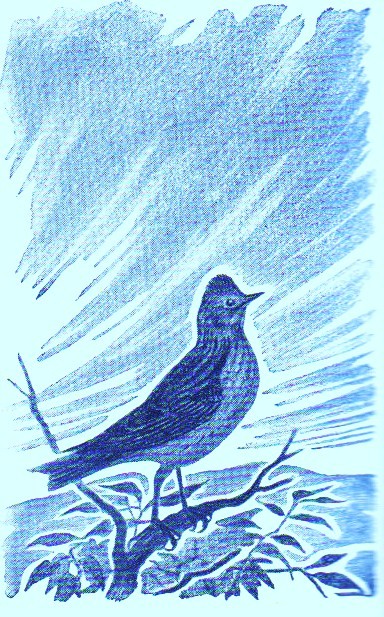
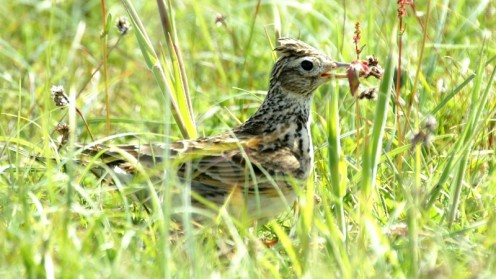
Skylarks!
There are about a hundred species of larks, but the one best known is the Skylark. Some birds are foolishly named, but the man who gave this bird his title, merits our admiration.
There is the very essence of warm poetry and music in the name Skylark. The little soloist nests humbly amid rough grass, or concealed in a wheat-field. However, he takes his song near heaven from which it came. He is born in a cluster of grass among the clods, but he springs up into the blue depths of the sky, and makes the sunlit air the platform for his streaming song. To know the rapture of this wee one's song, you simply must experience first hand his melody.
It's a small bird and like other larks, it's the song of the male that is a delight. His song usually last about two and a half minutes, but interestingly the length of the song gets longer in the last weeks of the species mating season. Additionally, the song is always made in flight, and the females of the species gravitate to the males who can sing and hover the longest (proves their stamina and fitness). Skylarks are monogamous and usually will mate for life.
The female Skylark always nests on the grown, and lays three to six eggs each June. The eggs are pale yellow, with brown to purplish spots profusely closest to the large end.
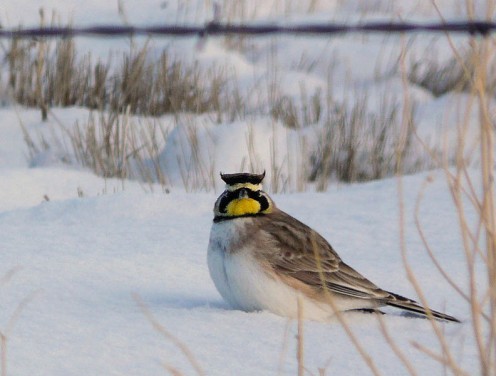
Loss Of Habitat
The fact that larks are plentiful near cities where never a blade of wheat is grown, is in part answer to the charge that these birds are harmful to grain. Indeed, they are seed eaters, and they do, from time to time, claim a little grain. However, for every grain of wheat that they eat, they pay in labor of the most beneficial kind. They are also great hunters of insects, and the young larks depend entirely in their nursery days upon thousands of insects for diet.
If we were to deny the lark his tiny portion of grain, we must censor our poets, for this bird has inspired some of the finest poems ever written. Yet, as we've moved farther and farther away from being agriculturally oriented, that is exactly was has happened. It's estimated that we've lost over thirty percent of all of the lark species, just in the last fifty years.
There are two species of lark which sing. The skylark has a long two-pointed tail is one of them. The skylark is most often a bird to be heard, but not often seen. Common in Central Europe, the bird (especially the Crested Larks) spends its summers in Spain, and ranges even as far south as Africa in the winter.
No birds could be more shy than these, but once they reach their primary home quarters in Germany, they become as confident as sparrows, and can be found and seen in abundance.
Sound Of Nature - Nightingale
The Sweetest Song Of All
From the works of Hans Christian Andersen to John Keats, to Tennessee Williams, and even to the song of Bob Dylan -- the magic of the Nightingale, is the perfect bird family ending to the songs of the lark family at heaven's high gate. From the throat of the lark, it's fitting to mention this bird's song -- which has thrilled poet, princes and peasants throughout the ages -- can claim the prize, as few bird songs compare to the Nightingales.
Not unlike a soberly clad slim robin, this matchless bird winters in Africa, but comes north for its cradle. They get their name from the fact, that the males frequently sing at night (as well as in the day). Their name literally means "night songstress."
Early observers and writers mistakenly believed that the female sang. It's a loud song, with a wide variety of whistles, trills, and gurgles. The reason for the Nightingale's nocturnal fame is that few birds sing at night. In truth, only the single (unpaired) males sing in hopes of attracting a mate. Much like the rooster who crows before dark and before sunrise, it may also be a way of protecting and defining it's territory. The Nightingale's song always ends in a loud crescendo that sounds more like a whistle.
It makes a modest little nest in low shrubs and bushes, especially in the woods and hedgerows. When urged b the full ecstasy of song, it stands its ground on a green spray and sings in our face, as we halt a yard from it. Night and day it chants while its mate is brooding her eggs. If the best canary that ever trilled had been glorified immeasurably, such a bird might match a nightingale, no other can.
The canary mention gives the clue to its haunting melody, and once the note has been memorized by the nightingale, it can never be forgotten. At night when all else is hushed, the world is the nightingale's. He thrills the silence with a song so lovely, so pure, so uplifting to the heart and spirit -- he can make the saddest believe in the beauty and beneficence of the providence which fashioned these birds to minister to our delight. To my way of thinking, that's exactly what the world needs now, a little more hope eternal, found in the simple sweetness of a songbird's song.
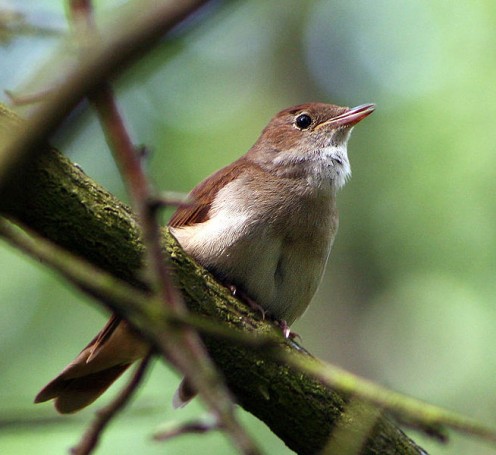
The Skylark
If You'd Like To Know More!
- British Garden Birds - Nightingale
Learn about the Nightingale. Includes pictures, calls and songs. - British Garden Birds - Skylark
Learn about the Skylark. Includes pictures, calls and songs. - New Zealand Birds | Birds | Gallery | skylark, Alauda arvenis
skylark, Alauda arvenis, New Zealand, bird, found in New Zealand Birds' bird gallery section, includes general information about the bird, taxonomy, description, where to find them and other useful and interesting information. The bird gallery links - Nightingale
- Peatlands | Wildlife | Birds | Skylark
- The RSPB: Skylark
The skylark is a small brown bird renowned for its display flight and song.

